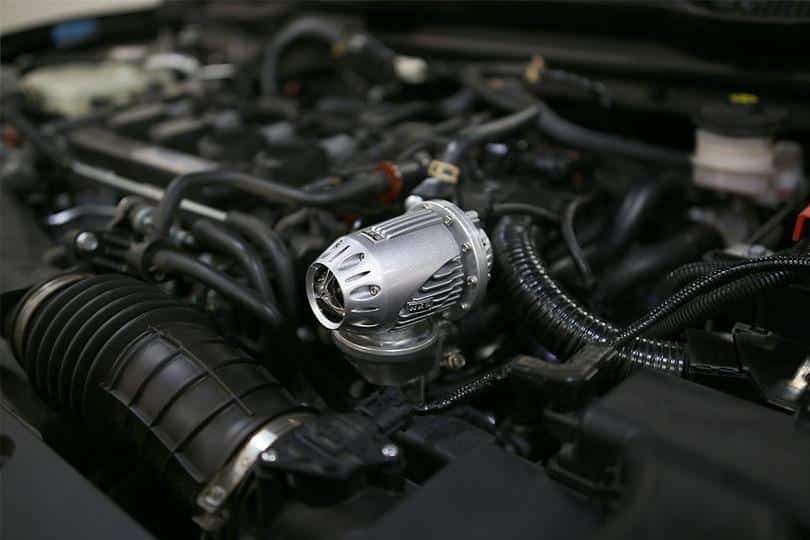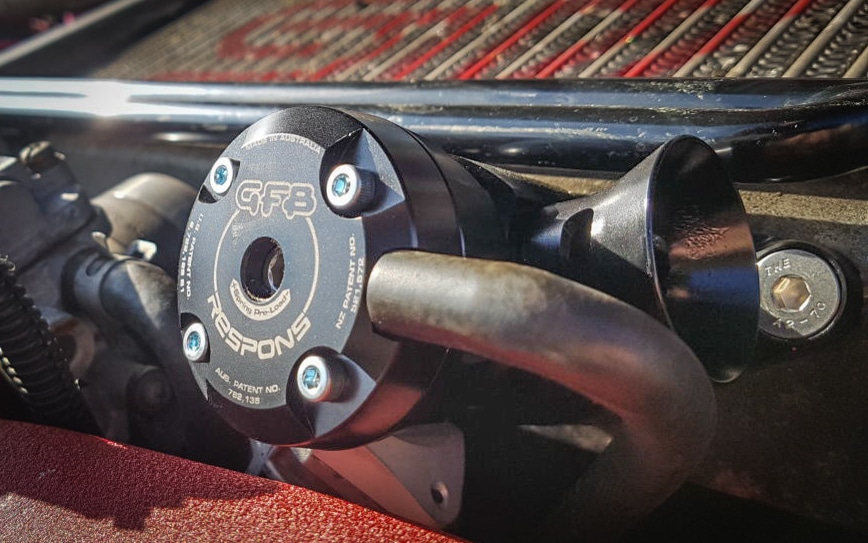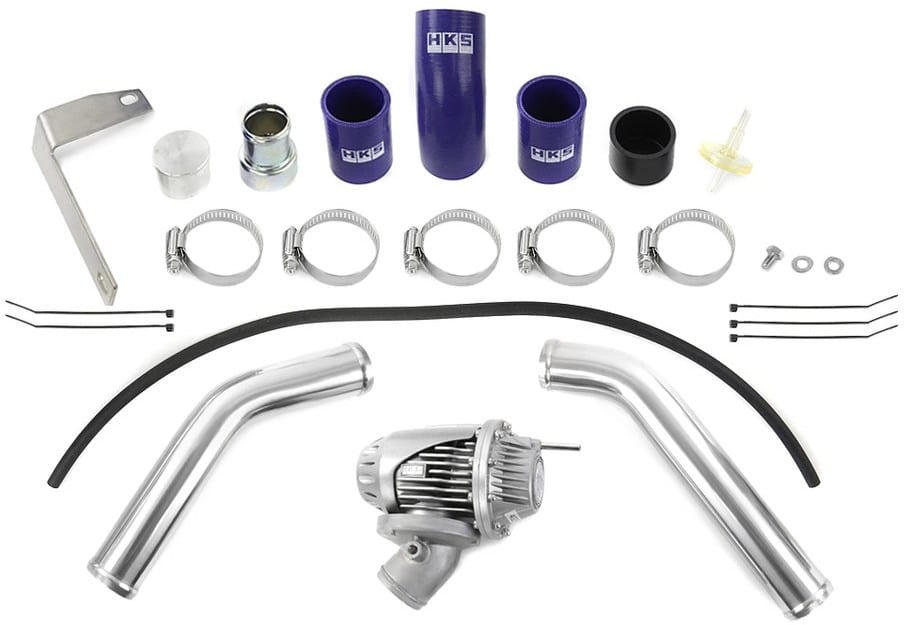Think of blow off valves and the very first thing that comes to mind is the loud whooshing sound that’s enough to get any car junkie’s blood pumping. Sure, they sound pretty freakin’ awesome but is that all they have to offer? Far from it.
BOVs and turbochargers usually go hand-in-hand because they’re not only a way to keep your turbo safe but also keep it running at peak performance. But how do they do what they do?
Keep reading because in this guide, we’ll discuss what blow-off valves are and how they can not only bring improved performance but also that iconic turbo sound.
What is a Turbo Blow Off Valve?
Blow-off valves are marketed as “boost response improvers” in between gear changes. However, their primary role is to protect your trusty turbocharger from all kinds of damage that can occur during gear shifting.
So how do BOVs achieve this? By releasing the excess pressure produced when the throttle is closed under boost conditions.
Take compressor surge or “turbo flutter” for instance. This occurs when you take your foot off the gas pedal abruptly, causing the throttle plate to close.
Following this, a rush of boost goes into the engine and back into the turbo because of the closed throttle plate. This could seriously mess with your car’s performance.
The boost going back to the compressor wheel can put a lot of stress on the wheel shaft. But with a blow-off valve onboard, you can redirect the surge away from the turbo by venting it.
BOVs use spring force and manifold pressure to determine when the throttle is closed. It also provides an outlet for the compressed air charge before switching back to the turbo and stalling the compressor wheel.
You’re likely to deem the plumb-back style as the best BOV system because it provides the optimal response between shifts. It does so by recirculating unwanted air charge to the compressor wheel at an angle that keeps the wheel spinning.
How Does It Work?
Blow off valves are either re-circulating or vented. With a recirculating bypass valve, the boost pressure circulates back into the intake. A vented or “atmospheric BOV” releases the air into the atmosphere instead of reusing it.
The pressure side of the valve is attached to the pipe that’s in between the throttle and the turbo. You’ll also find a vacuum hose on top of the valve and a spring that keeps the valve shut.
That will remain closed when you’re on the throttle because the pressure on both sides is the same, so it cancels each other out.
Your car has high pressure in the turbo piping when you lift off the throttle. That pressure needs to be released because it can’t go into the engine, so the lift valve opens from the pressure on the bottom of the valve and the vacuum on top.
When your car is on high boost, the intake pressure forces the piston into the upper housing. That prevents the excess boost pressure from slowing down the turbo and causing the dump sound.
Keep in mind that not all turbocharged engines work best with blow-off valves. You might need a bypass valve, which does the same thing but differently.
Different Types of BOVs
There are various manufacturers that you can choose from, but your decision will be between a hybrid or vented BOV.
The choice between hybrid and vented units has a lot to do with your transmission system and the lag during the gear shifting.
Vented
Of the two, vented BOVs are easier to install. They release air into the atmosphere and have a trumpet at the exit vent that makes a hissing sound during the air release.

Don’t be surprised if you experience turbocharger lag while shifting gears if you drive a manual. It happens because traditional BOVs release pressure into the atmosphere. That explains why some drivers refer to them as atmospheric blow-off valves.
Hybrid
Manufacturers designed hybrid BOVs to provide the solution to some issues with vented BOVs. And they do that by venting some of the air into the atmosphere. The rest gets recirculated in the intake system.
You’ll find that hybrid BOVs reduce lag when you’re shifting gears because they retain some of the pressure, so the boost doesn’t start from zero. You should use hybrid BOVs if you have a mass air flow sensor, or MAF on your engine.

How Do BOVs Affect Your Car?
The first, and most obvious thing you’ll notice is how different your car sounds. Blow-off valves are known for making cars noisier. So much so that some drivers fit BOVs just so that they can have a louder car.
This is all thanks to the exit vent that’s shaped like a trumpet and produces the characteristic loud whoosh or hissing sound.
On the other hand, OEM systems are often very quiet and take a keen ear to hear it working.
A blow-off valve’s purpose is to help the turbo system be more efficient and provide a smoother rider. You’ll find that’s the case because BOVs are naturally the next step if a driver fitted a turbocharger.
High pressure in an engine results from the build-up of air in the intake system. That can result in a compression surge and the resulting turbo flutter sound.
BOVs are designed to protect your turbocharger, and they do so by releasing excess air pressure from the engine.
Things to Consider When Buying a BOV
There are several important factors that you need to consider when buying a blow-off valve. That’s going to be the difference between you enjoying your BOV and regretting you ever installed one (or two).
Keep the following in mind during your purchase…
Installation
It’s one thing to buy your ideal BOV to get the sound and protection that you want, but fitting it is a whole different story. Purchasing a BOV that is easy to install makes your life a lot easier.
That’s why you should opt for a product that comes with a mounting kit and installation instructions, ideally specific to your make and model of car. That’s a more convenient option than choosing a product that doesn’t come with any mounting hardware.
Even worse is a BOV that requires specific equipment outside of an automotive tool set or that is so complicated to fit that you need to hire a professional. That’ll just add to the cost.

Build Quality
Sure, a high-quality BOV might set you back a bit more than you intended, but will it be worth your while in the long run? Hell yeah! The quality will determine how long before you have to repair or replace it.
It’ll also determine the performance you get. The better quality ones will sound great while also providing better engine protection.
You’ll get that if you opt for one that has a piston made from anodized aluminum and a billet frame.
Don’t even bother getting one made from plastic. Blow-off valves release excess pressure, but how can it do that if the pressure melts or cracks the plastic?
When choosing the quality, also consider the sound. Some BOVs produce a loud, aggressive sound that attracts attention, while others are soft and hiss.
Compatibility
While choosing a high-quality BOV is important, be sure to select one that is compatible with your vehicle.
There’s no denying you’ll find a handful of universal-fit BOV out there but it’s best to purchase a custom fit.
It might take a bit of research on your part, but it’s best to find BOVs that are specifically designed for your car’s make and year model.

BOV vs CBV
Not all turbocharged engines are suitable for BOVs, so some might work better with compressor bypass valves (CBV). Choosing between the two comes down to how your engine deals with excess air pressure.
If your engine needs to direct pressurized air into the non-pressurized intake, then you’ll need a CBV. If you’re still unsure about which one you need, call in the experts or ask about it on a car forum.
Fitting a CBV is more complicated than BOVs, which are attached only at one end.
Blow Off Valve vs Wastegate
Both a BOV and a wastegate work by releasing pressure. However, the similarities end there.
Wastegates work on the exhaust side, while BOVs work on the intake. Furthermore, while a BOV will prevent air from blowing back into the turbo and slowing it down, a wastegate is designed to prevent your turbo from producing too much boost.
A wastegate will regulate the pressure inside your engine by progressively opening and venting exhaust gases that could push your turbo to a higher psi than what you’re currently running.
BOVs are an extra add-on that can improve performance in your car, wastegates are a necessity to keep your engine safe from excessive pressure.
Blow-Off Valves: Should You Get One?
Blow-off valves and turbocharged engines pretty much go hand in hand. While you can opt for a CBV too, BOVs complement turbos because they provide extra protection and make the ride smoother.
Let’s not forget how cool they sound if you want to attract some attention, you should consider getting an aftermarket blow-off valve. Just remember to get one that is high-quality so that you can fully enjoy it without hassle down the track.
Are you considering getting a blow-off valve? We’d love to know where you stand, so let us know in the comments below.


1 comment
This is a really good article. Thank you for writing it in such an easy to understand way.